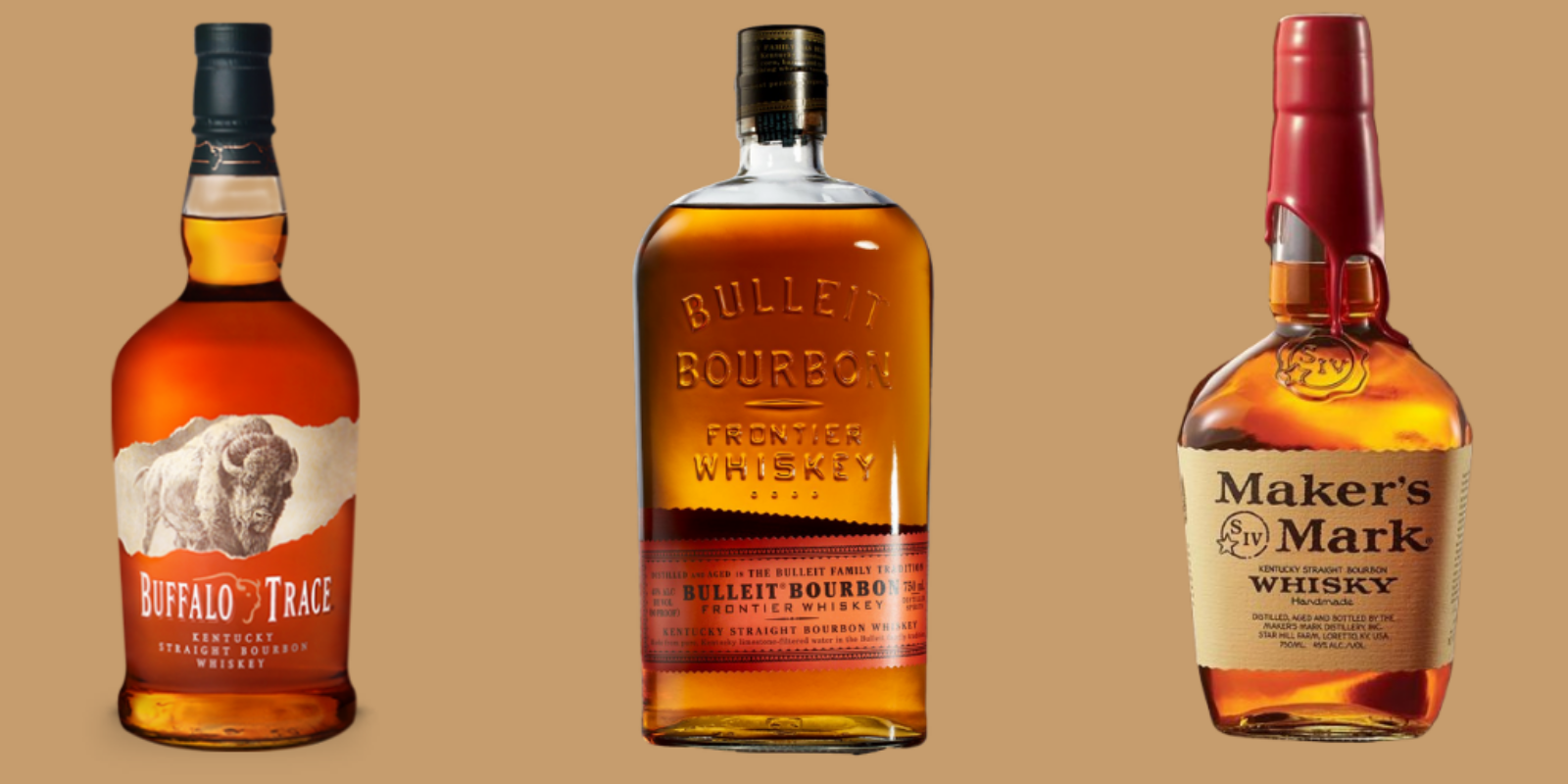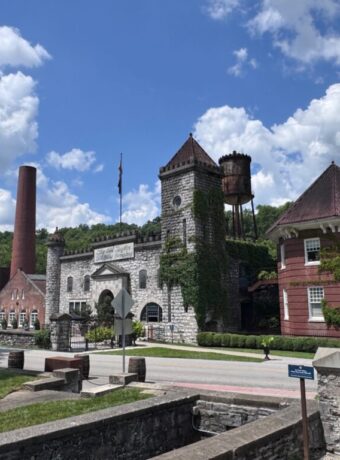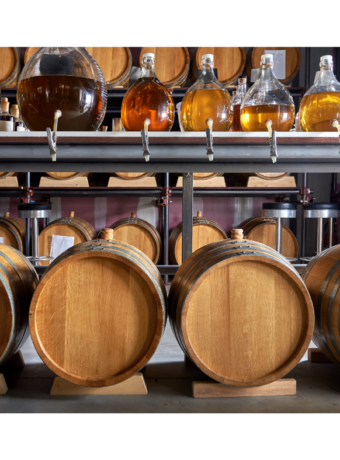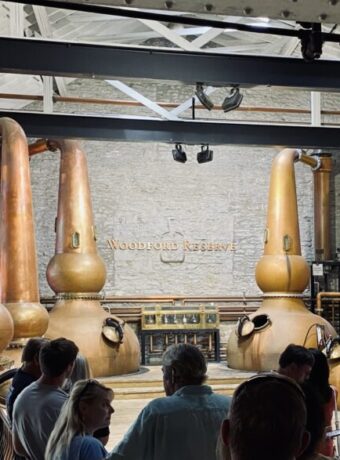Alright, you got the bottles and you are ready to start drinking! Wait, but now you are thinking do I need one of those fancy glasses I have seen? How much do I pour? Should I put some ice in the cup? If you want to do those things, that is completely fine. We believe that you should drink and enjoy bourbon however you like, period. But, you have to start somewhere to determine what you like.
So, you want to venture into the world of bourbon? But, where do you start, what bottle should you buy, what if you don’t like it, what do you spend your hard earned money on? It seems simple, head to the store and grab a few bottles to try. When you get to the store you find yourself standing in front of multiple shelves, even isles of bourbon. How can there be so many?! What is the difference, which one is good, is the expensive one better?
These are all questions that we asked ourselves and that smacked us in the face during that first trip to the store to pick up a bottle. We don’t want you to be surprised and frustrated when you go to grab your first bottle, or even worse, leave the store empty handed and disappointed. We want to share what we have learned along the way and help you make it easy to get started on your journey.
Take a look around the internet about how to get started and you will likely find a lot of “best of” lists and not a lot of explanation about why you should pick certain bottles to get started. We are going to share our suggestions for where to get started based on what we have learned and tell you why we suggest those bottles. One very important thing to remember throughout your journey is that taste is subjective, different for each person, so one person’s favorite bottle may be another’s worst; one person’s trash is another’s treasure.
There are so many options to choose from, how do you know where to start and what to pick? These recommendations give you a broad high-level introduction and will give you some insight to your preferences and where you should look as you buy your next bottle. The suggestions take into consideration the general aspects of bourbon and present an even playing field across the available options to get you started.
The general characteristics that a bourbon has include mashbill, age and proof, a brief description of each of those is given below. We also consider availability and price, because getting started shouldn’t cost you a lot of money or take a lot of effort!
Mashbill
The recipe of grains that go into making the bourbon is called the mashbill and must be at least 51% corn by the definition of bourbon. The remainder of the mashbill consists of other grains, most typically rye, malted barley and wheat. As a generalization bourbons can be categorized by low rye, high rye, wheated.
- Low rye: typically considered to have less than 15% rye in the mashbill
- High rye: typically considered to have 15-35% rye in the mashbill
- Wheated: contains wheat in the mashbill instead of rye, typically 15-20%
Taste and Smell
Below are the general smells and flavors that are found in bourbon and which grain is generally responsible:
- Corn: sweetness
- Rye: spicy, pepper, herbal, mint
- Wheat: sweetness, fruit, can give a “soft” taste
- Malted barley: nuttiness and smoke
- The barrel: oak, vanilla, caramel
Age
The amount of time that bourbon spends in the barrel has a tremendous impact on the taste, arguably even the most important factor in making bourbon. For a good introduction and experience a good starting place is bourbons with similar ages so that the influence from the barrels can be generally similar. The recommendations here each have an age of approximately 6-8 years. The specific age is not stated since these bourbons are mixed with many different barrels with various ages in order to obtain a consistent flavor profile for the brand.
Proof
The alcohol content of the bourbon also greatly influences the taste, the same bourbon at different proofs can taste very different. For someone just getting started, the higher amounts of alcohol can also leave the impression of the taste being only the “burn” from the alcohol. High amounts of alcohol can also numb the taste buds and keep people who aren’t accustomed to it from really tasting all the flavors in a bourbon. For these reasons, a great starting point is to compare bourbons of similar lower proof, the recommendations here are each 90 proof (45% alcohol).
Availability
Each of the suggestions here should be available on the shelf wherever you buy liquor in your state, grocery store, gas station, liquor store or agency store. When getting started it is important to be able to find things to be able to try. There are tons of choices out there that are hard to find, but when you’re getting started it is far better to spend your time drinking and tasting then driving around trying to track down hard to find bottles. Take some time to find out what you like before you spend an afternoon visiting a dozen different stores only to buy a bottle that you don’t actually like.
Price
Similar to availability, getting started shouldn’t cost you an uncomfortable amount of money. There is a ton of value in bourbon and you can find great bottles at whatever price point you are comfortable with. As you are trying to figure out what you like, why spend a bunch of money on something that you may not like at all. Start at a low price, if you don’t like something you won’t feel bad and you learned something without spending a ton of money. Each of the recommendations here should be able to be purchased for near $30 or less.
Recommended Bottles
- Low rye: Buffalo Trace
- Mashbill: ~10% or less rye, no wheat
- General smell and flavors: caramel, vanilla, oak, brown sugar, sweet, small amount of spice from low rye content
- High rye: Bulleit
- Mashbill: (68% Corn, 28% Rye, 4% Barley, no wheat)
- General smell and flavors: caramel, vanilla, oak, much greater amount of spice and pepper fromm the high rye content, “heat”
- Wheated: Maker’s Mark
- Mashbill: (70% Corn 16% Wheat, 14% Barley, no rye)
- General smell and flavors: sweet smell and taste, fruity, honey, caramel, vanilla, oak
If it happens that any of these are hard for you to find, the mostly likely challenge is Buffalo Trace, the suggestions below are also a great starting point.
- Low Rye: Elijah Craig Small Batch, 10% rye, 90 proof
- High rye: Old Grandad Bonded, 27% rye, 100 proof
- Wheated: Larceny Small Batch, 20% wheat, 92 proof
Time for the first sip
Alright, you got the bottles and you are ready to start drinking! Wait, but now you are thinking do I need one of those fancy glasses I have seen? How much do I pour? Should I put some ice in the cup? If you want to do those things, that is completely fine. We believe that you should drink and enjoy bourbon however you like, period. But, you have to start somewhere to determine what you like.
What to put it in
Do you need a special glass? No! While there are certainly benefits from different glasses that we will discuss in a later post, you don’t need those to get started. My first taste of bourbon came from a forgotten coffee cup in the back of the cupboard and that was perfectly sufficient. If you have a favorite glass or mug get that out, if not, just pick something in the cupboard.
With ice or neat?
When I got started I liked to always have at least a small sip neat, with no ice, so that I could taste the bourbon itself without any other influence. Drinking with ice worked very well for me as it toned down some of the “heat” and “burn” that I was unfamiliar with. Having some ice, or adding a little water, can make the bourbon more drinkable while still getting an introduction to the flavors.
Over time I transitioned from normally with ice to normally neat, and neat is my general preference now. I do occasionally enjoy some bourbons with ice, it offers an interesting drink as the ice slowly melts in the glass and changes the flavor of the bourbon while you are drinking it.
How much?
Do you want to dive right in and try all 3 at once, or try one at a time on different days? Keep in mind that there is a lot of alcohol in bourbon, so be mindful of your pours. A typical pour of bourbon is about 1.5 ounces, while it is common to pour closer to 1 ounce each when sitting down to sample multiple bourbons.
A couple relatable and easy to understand comparisons to keep in mind are a can or bottle of beer and a glass of wine. A beer typically has 5-6% alcohol in 12 ounces and a glass of wine is generally 5 ounces with around 12% alcohol. These familiar typical servings contain about 0.6-0.7 ounces of alcohol. The bourbon suggestions here are all 90 proof, 45% alcohol, giving a typical 1.5 ounce pour of bourbon a comparable 0.68 ounces of alcohol.
Drink it!
Have a sip of whatever you poured in your glass and enjoy. There is a lot to be said about tasting bourbon and we will talk more about that later. There are a few general things to keep in mind for now as you get started. Have a few sips, the typical pour of bourbon is drank in a few sips, generally not downed as a shot. Take a sip, let it sit in your mouth for a few seconds, you can move it around your mouth a bit, swallow and enjoy the taste. It is also common to have a glass of water while you are tasting for the occasional drink between sips or before switching to something new.
As you are enjoying, keep in mind what you are tasting and the different sensations. Each of the recommendations have very different tastes. You may find that you have a strong preference for one or two, or maybe you will like all three the same. This is a starting point that gives you an introduction and will help you find what you like and give you some direction toward your next bottle to try.
Start your journey!
You have plenty of time ahead of you to try different bottles, different glasses, different ice cubes and to buy new things to try and start your bourbon related collection. In time you will learn more about tasting, barrels, warehouses and everything related to bourbon. There is no need to get hung up on everything at once. The first step is to get started, just buy some bourbon to drink and enjoy. Let the journey begin!



